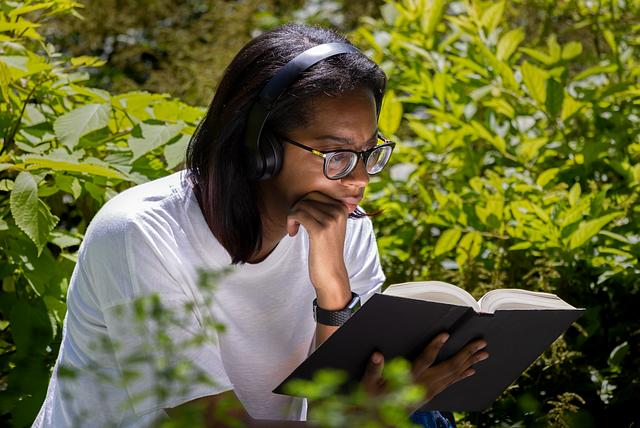Despite years of classroom instruction, a significant number of high school students continue to struggle with basic reading skills-a challenge that education experts say undermines academic success and future opportunities. The Hechinger Report investigates a growing movement among educators to integrate explicit reading instruction across all subjects, not just in English classes, as a potential solution to this persistent problem. This approach, proponents argue, could help bridge the literacy gap by embedding reading skills development into every classroom, from science to social studies. But is teaching reading in every class the key to unlocking literacy for struggling students, or does the strategy risk overwhelming teachers and diluting focus?
The Reading Crisis in High Schools and Its Widespread Impact
Across the nation, a staggering number of high school students struggle to read at grade level, a challenge that ripples far beyond the classroom. This literacy shortfall, often overshadowed by more visible academic issues, severely limits young people’s ability to engage fully with subjects ranging from history to science and math. Without strong foundational reading skills, students face hurdles in understanding complex texts, critically analyzing information, and succeeding in standardized tests. The implications extend into workforce readiness, where literacy is a non-negotiable skill, and into civic participation, which depends on the ability to comprehend and evaluate written content.
Educators and policymakers are increasingly recognizing the interconnectedness between literacy and overall educational outcomes, leading to calls for innovative strategies to close the gap. These solutions include:
- Integrating reading instruction across all subjects to reinforce comprehension and analytical thinking skills.
- Providing targeted interventions for students who fall behind early in their academic careers.
- Utilizing data-driven assessments to tailor learning plans and monitor progress effectively.
- Investing in teacher training to equip educators with evidence-based literacy strategies.
| Issue | Impact | Potential Solution |
|---|---|---|
| Low reading proficiency | Reduced academic success | Cross-curricular reading instruction |
| High dropout rates | Long-term economic effects | Early intervention programs |
| Limited workforce readiness | Employment challenges | Skills-focused literacy curricula |
Why Traditional Literacy Education Falls Short for Older Students
Many older students struggle with literacy because traditional methods often focus on early childhood reading skills and do not sufficiently address the complexities of adolescent and adult literacy development. The curriculum tends to prioritize standalone reading classes rather than integrating literacy practices across subjects, leaving gaps in students’ ability to comprehend and analyze complex texts. These students frequently face challenges such as limited vocabulary, weak background knowledge, and minimal engagement with diverse types of texts, which are rarely tackled in isolation by conventional literacy instruction.
Moreover, older students bring unique learning needs:
- Varied reading levels: A wide range of skills requires differentiated instruction rather than one-size-fits-all approaches.
- Application over basics: Emphasis should be on applying literacy in real-world and content-specific contexts.
- Motivation and relevance: Engagement improves when reading material connects to students’ interests and future goals.
| Traditional Literacy Focus | Needed Shift for Older Students |
|---|---|
| Phonics & decoding | Critical thinking & analysis |
| Simple texts | Complex, content-rich texts |
| Isolated reading classes | Cross-curricular literacy integration |
| Early literacy milestones | Lifelong literacy development |
Integrating Reading Instruction Across All Subjects to Boost Comprehension
Embedding reading instruction across various subjects transforms the classroom into a dynamic learning environment. When teachers in science, social studies, or even math emphasize literacy skills like decoding complex texts, interpreting data, or understanding terminology, students develop the ability to transfer reading comprehension strategies beyond English class. This interdisciplinary approach recognizes that reading is not confined to isolated lessons; rather, it is a foundational skill integral to mastering content in every field. Schools adopting this strategy report increases in student engagement and confidence as learners apply critical thinking to real-world texts, such as scientific reports, historical documents, and technical manuals.
Key elements of successful integration include:
- Professional development for teachers to embed literacy techniques in their subject areas
- Collaborative planning among educators to align reading goals with subject standards
- Utilizing diverse texts that reflect authentic disciplinary discourse
- Continuous assessment to tailor instruction and track reading growth across curricula
| Subject | Reading Focus | Example Activity |
|---|---|---|
| Science | Interpreting graphs and technical vocabulary | Analyze a lab report to identify hypotheses and conclusions |
| Social Studies | Understanding primary sources and context clues | Examine historical letters for bias and perspective |
| Math | Comprehending word problems and symbolic language | Decode complex problem statements to improve accuracy |
Strategies for Teachers to Embed Literacy Skills in Everyday Lessons
Embedding literacy skills across all subjects transforms reading from a standalone task into a dynamic, pervasive practice. Teachers can integrate vocabulary development tailored to their disciplines, encouraging students to grasp subject-specific terms that enhance comprehension and critical thinking. Utilizing cross-curricular reading materials-such as historical documents in social studies or scientific articles in biology-provides authentic contexts where literacy becomes a functional tool, not just an academic requirement.
Additionally, fostering a classroom environment that prioritizes diverse modes of literacy can support varied learning styles. Techniques like collaborative discussions, writing summaries, and presenting research findings engage students actively with texts. Below is a concise overview of strategies teachers across subjects might employ to weave literacy into daily lessons:
- Annotate texts with guided questions to promote analytical reading
- Implement writing prompts that connect subject matter to personal experiences
- Use graphic organizers to help students structure ideas clearly
- Encourage peer review to build critical evaluation and editing skills
- Incorporate multimedia sources to diversify literacy engagement
Concluding Remarks
As the debate continues over how best to address the widespread struggle with literacy among high school students, the idea of teaching reading across all subjects gains traction, but also raises important questions about feasibility and effectiveness. While integrating reading instruction throughout the curriculum could provide much-needed support for struggling readers, educators and policymakers must carefully weigh the challenges and opportunities involved. Ultimately, ensuring that every student graduates with strong reading skills remains a critical priority-one that demands collaborative efforts, innovative strategies, and sustained commitment across the entire education system.







